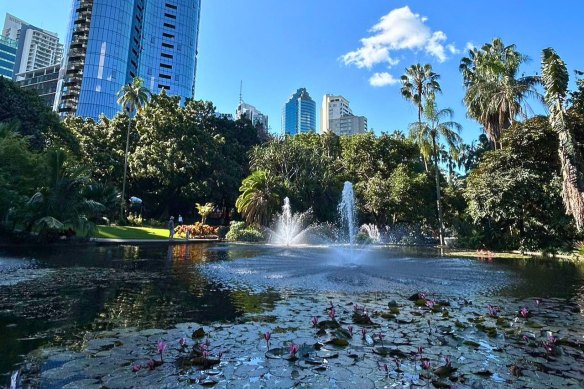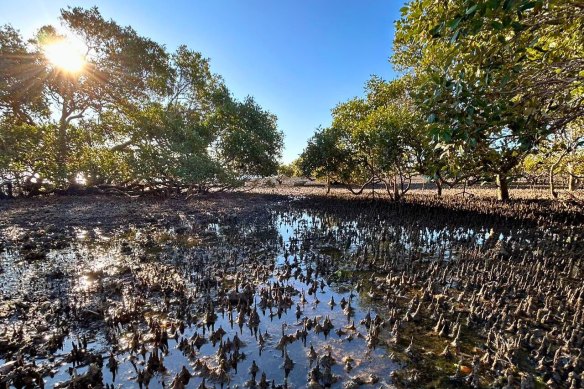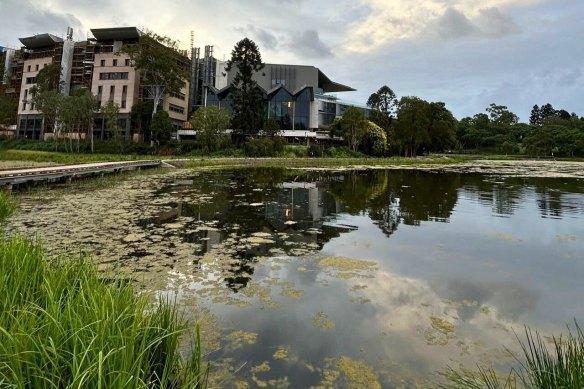Opinion
Why Brisbane needs more green space, not less
Ali Cheshmehzangi
ContributorAre Brisbane’s green areas a waste of space? Some consider them underutilised opportunities for profitable ventures, and in some cases, that may be true. But to label them a waste is misdirected.
Green spaces play a significant role in flood mitigation and climate resilience. We need more of them, not less.

Brisbane’s City Botanic Garden is an example of a multi-function asset that provides recreation and flood mitigation.Credit: Ali Cheshmehzangi
Brisbane is located on a floodplain, but as climate change intensifies the frequency and severity of flooding across the city, we haven’t been as prepared as we should be to mitigate the risks.
By adopting innovative approaches to policy, planning and design, we can help protect our communities from future flooding and climate events.
In February and March 2022, 795 millimetres of rain fell over five days in Brisbane, causing significant flooding and overland flow from rivers and creeks.
Since then, the ability of the city’s urban environment to cope with future deluges has come into greater focus.

Nature-based solutions such as Wellington Point wetlands play a crucial role in supporting biodiversity and reducing the effects of flooding.Credit: Ali Cheshmehzangi
It is encouraging that Brisbane City Council has developed a flood resilience action plan. Local government has also bought back hundreds of flood-affected properties in Brisbane and Ipswich to be preserved as open space.
These buybacks not only reduce the risk to life and property, they also provide ecological benefits, creating green corridors that enhance biodiversity and natural water absorption.
Other proactive initiatives, such as stormwater management, green infrastructure and nature-based solutions, will also help mitigate the effects of climate change, protect natural habitats, and ensure residents’ long-term safety and wellbeing.
Historically, we’ve relied on grey infrastructure such as pipes and drains to move stormwater, but this is often insufficient. Through co-planning, co-management and co-design, green infrastructure – including, but not limited to, functional green space – can help tackle environmental challenges.

UQ Lakes at the St Lucia campus irrigate the Great Court, the university grounds and sports fields. They are also home to numerous native species of flora and fauna.Credit: Ali Cheshmehzangi
Parks can be designed to incorporate a depression that temporarily holds excess water during heavy rain events, vegetation systems can aid with erosion control and reduce sediment-laden run-off, and wetlands can serve as buffer zones that act like sponges. Permeable pavements can enable rainwater to penetrate the ground, and green roofs can help dissipate the urban heat island effect and reduce stormwater run-off.
We need to change our perception of green spaces and infrastructure and ensure they are designed as multi-benefit assets for our communities.
At the University of Queensland, we have been researching nature-based solutions, ecological preservation and development, water-sensitive urban design, and green infrastructure planning.
As researchers and educators, we also have a responsibility to emphasise the significance of climate resilience planning and design, and to help prepare the next generation of leaders tackle future climate challenges. They have a major task ahead.
Start the day with a summary of the day’s most important and interesting stories, analysis and insights. Sign up for our Morning Edition newsletter.